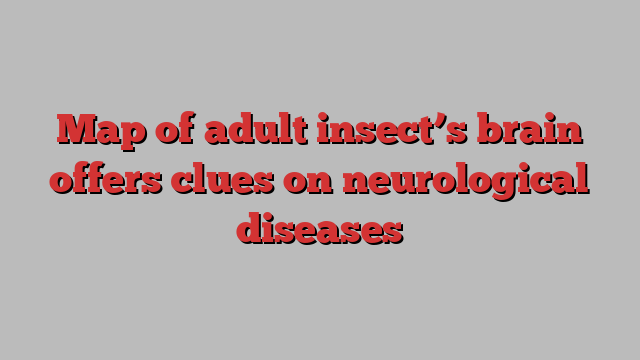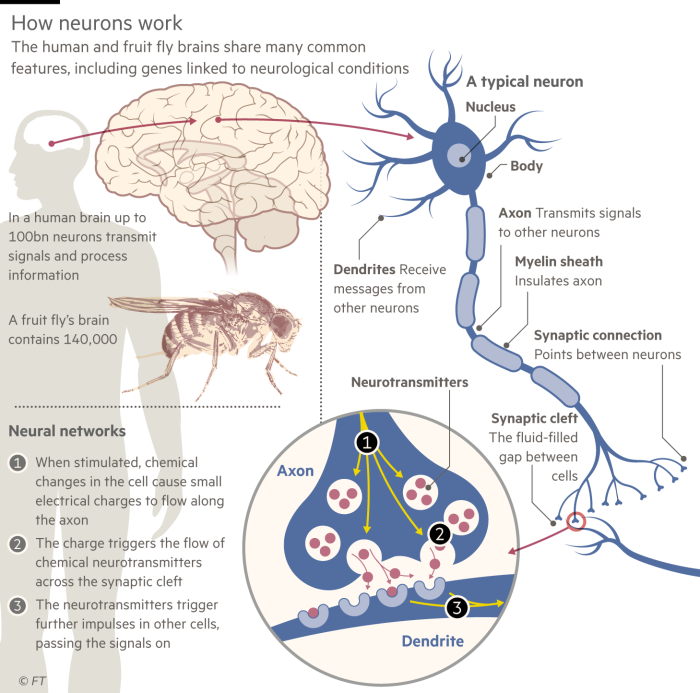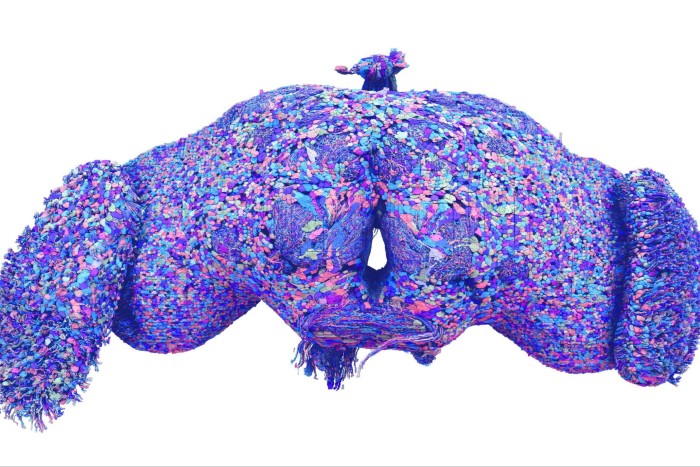
Stay informed with free updates
Simply sign up to the Science myFT Digest — delivered directly to your inbox.
An international scientific team has built the first map of an adult insect’s brain, offering a potential breakthrough for our understanding of how the organ works and why it is harmed by neurological diseases.
The project plotted the full 149 metres of biological wiring that make up a fruit fly’s poppy seed-sized brain and govern the organism’s life. It promises to boost knowledge of the human brain since the two species’ organs share many common features, including genes linked to neurological conditions that afflict billions of people worldwide.
“One of the major questions we’re addressing is how the wiring of the brain, its neurons and connections can give rise to animal behaviour,” said Mala Murthy, co-lead of the FlyWire research consortium and a professor of neuroscience at Princeton University. “Flies are an important model system for neuroscience, since their brains solve many of the same problems we do.”

The venture, published in Nature on Wednesday, had parallels to the Human Genome Project, which was concluded in 2003, researchers said. That sequencing mission has helped power many discoveries about disease.
FlyWire aimed to chart a “connectome” — a set of possible pathways for information to flow between the neuron cells that make up the brain and the synapses linking them. Researchers sliced up the brain of the Drosophila fruit fly into more than 7,000 sections, analysed them using powerful microscopes and rendered the results as a 3D image.
The raw diagram was then annotated to identify thousands of different characteristic cell types, in what one scientist described as like adding features such as street names and business opening hours to a Google map. The project used crowdsourcing to assemble “citizen scientists” to ease a proof-reading burden that would have taken one person an estimated 33 years to complete.
The resulting Drosophila connectome of about 140,000 neurons and 50mn synaptic connections is available to researchers for free online. Scientists have already begun looking at how the parts of the brain structure might relate to functions such as walking, tasting and seeing.
“If we can truly understand how any brain functions, it’s bound to tell us something about all brains,” said Sebastian Seung, another co-author on the Nature papers and a Princeton professor. “It’s fair to say that this past decade has seen revolutionary progress in understanding the fly brain.”

The connectome offers a “ground truth” that could help power research into neurological diseases, said John Ngai, a co-author and director of the BRAIN initiative at the US National Institutes of Health.
More than 40 per cent of the global population suffered nervous system problems such as stroke, dementia and migraine in 2021, according to research published in March.
“Having this map in hand is necessary — but not sufficient,” Ngai said. “It will really allow us to ask better questions and more precise questions.”
A separate project has begun to map the brain of a mouse, estimated to be a million times larger than that of a baby fruit fly’s. The human brain represents an even tougher challenge: it contains more than 80bn neurons and 100tn connections.
The genome analogy suggests how future work on brain structures could overcome FlyWire’s limitations, such as its lack of data on non-synaptic ways neurons communicate, said Anita Devineni, an Emory University assistant professor. As with the genome work, development of better brain maps will drive progress in areas such as artificial intelligence algorithms.
In a commentary published in Nature, Devineni said FlyWire had “driven technological and conceptual advances that will facilitate the reconstruction and interpretation of future connectomes in Drosophila and other species”.
Illustration by Ian Bott